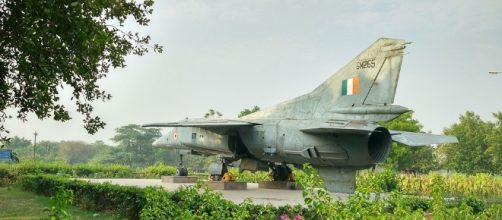China and india have locked horns on the tri-junction at Dhokla between Tibet, the Indian state of Sikkim and Bhutan. The Indian and Chinese troops are facing each other as India has claimed that the construction of a road by China at Dhokla is illegal. The Chinese claim Dhokla by an 1890 treaty between British India and Tibet. Bhutan claims Dhokla is part of its territory. This confrontation is going on, and the importance of two air bases at Baghdogra and Hasimara in the region closest to Dhokla cannot be underestimated.
India is now upgrading the Hasimara base which will be one of two air bases to house a squadron of Rafale fighter jets in 2019.
The Rafale is a Mach 2 supersonic air superiority fighter. It is superior to any Chinese air force plane.The aircraft is directly purchased by the IAF from France. India is to buy over a 100 of these fighters in a direct one-time purchase, reported The Times of India.
Hasimara and the Rafale fighter
The air force base at Hasimara is located in North Bengal and close to the India-Bhutan border. The base has a critical role to play to guard against any offensive by China in the narrow area called the “Chickens neck,” that joins India with the North East states including Assam. The base had earlier two squadrons of Mig -27 fighters. One of the squadrons is number plated (decommissioned) and the base is being upgraded to house the Rafale jets.
This French plane was selected by the Air Staff team of the IAF from a host of competitors including the Euro Fighter, MIG 31 and F-16. The French Air Force technicians and engineers are at the base to revamp the technical facilities to make the base operational. The Chinese are watching the developments with interest. China has its bases in Tibet, but due to the high altitude, their fighters cannot operate at optimum efficacy.
India faces China
India has a string of forwarding bases at Hasimara, Tezpur, Chabua, and Baghdogra to face the possible threats. Many of these bases were used by the Royal Air Force and US Army Air Air Force in operations to support the Chinese nationalists, led by Generalissimo Chiang Kai Shek during the Second World War against Japan.
India inherited these bases and had developed them after 1962 to face the Chinese threat. 1962 was a watershed year as an unprepared Indian army was thrown to fight the Chinese attack. At that time the Chinese had the better of the Indian army.Hopefully, this won't be repeated.


